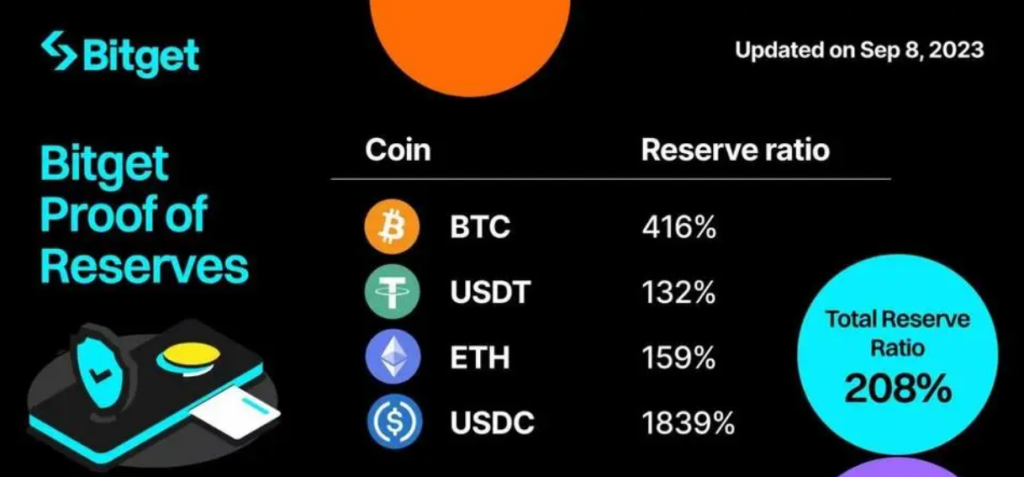A Theory of Microwave Propulsion for Spacecraft
无工质微波推进理论
原作者:Roger Shawyer C.Eng MIET SPR Ltd
英国工程技术学会特许工程师 罗杰.苏牙
翻译:light year
Abstract摘要
A new principle of electric propulsion for spacecraft is introduced, using microwave technology to achieve direct conversion of d.c. power to thrust without the need for propellant.
介绍一种新的电磁空间推进理论,使用微波技术,在无工质情况下实现电力直接转换推力。
A simplified illustrative deion of the principles of operation is given, followed by the derivation, from first principles, of an equation for the thrust from such a device. The implications of the law of conservation of energy are examined for both static and dynamic operation of the device.
先给出简化的原理论述,其次是推导,由第一个原理,无工质微波推进的推力方程。它遵守能量守恒定律,可以从静态和动态对无工质微波推进设备进行验证。
1. Basic Principles 基本原理
The technique described in this paper uses radiation pressure, at microwave frequencies, in an engine which provides direct conversion from microwave energy to thrust, without the need for propellant.
本文中描述的技术使用辐射压力,在微波频段,在一个引擎的推力是由微波能量直接转换得来的,无需推进剂。
The concept of the microwave engine is illustrated in fig 1. Microwave energy is fed from a magnetron, via a tuned feed to a closed, tapered waveguide, whose overall electrical length gives resonance at the operating frequency of the magnetron.
微波引擎的概念是图1中所示。由磁控管产生的微波能量,经过调整进入一个封闭,锥形波导腔体内,其外形,电长度让工作微波产生了共振。
The group velocity of the electromagnetic wave at the end plate of the larger section is higher than the group velocity at the end plate of the smaller section. Thus the radiation pressure at the larger end plate is higher that that at the smaller end plate. The resulting force difference (Fg1 -Fg2) is multiplied by the Q of the resonant assembly.
电磁波的群速度在锥体大端高于锥体细端。因此锥体的大端辐射压力高于锥体细端。这导致了辐射压力差等于(Fg1 -Fg2)乘以谐振腔品质因数Q。
This force difference is supported by inspection of the classical Lorentz force equation (reference 1).
这个压力差遵守经典洛伦兹力方程(参考方程1)。
(1)
If v is replaced with the group velocity vg of the electromagnetic wave, then equation 1 illustrates that if vg1 is greater than vg2, then Fg1 should be expected to be greater than Fg2.
如果v被替换为电磁波的群速度vg,然后方程1所示,如果vg1大于vg2,那么Fg1应该大于Fg2。
However as the velocities at each end of the waveguide are significant fractions of the speed of light, a derivation of the force difference equation invokes the difference in velocities and therefore must take account of the special theory of relativity.
然而随着锥形波导两端的速度是接近光速,推力差方程的推导过程需考虑速度的差异,和狭义相对论理论影响。
Relativity theory implies that the electromagnetic wave and the waveguide assembly form an open system. Thus the force difference results in a thrust which acts on the waveguide assembly.
相对论意味着电磁波和波导装置形成一个非密闭的系统。因此,压力差所导致推力作用于波导装置。
2. Derivation of the thrust e quation.推力方程的推导
Consider a beam of photons incident upon a flat plate perpendicular to the beam. Let the beam have a cross-sectional area A and suppose that it consists of n photons per unit volume. Each photon has energy hf and travels with velocity c, where h is Planck’s constant and f is the frequency. The power in the incident beam is then.
考虑微波束垂直入射平面。让这束微波穿过有一个横截面积A,假设它有n个微波光子每单位体积。每个微波光子能量hf和速度c,h是普朗克常数和f是频率。然后入射微波束的功率。
(2)
The momentum of each photon is hf/c so that the rate of change of momentum of the beam at the plate (assuming total reflection) is 2nhfA. Equating this change of momentum to the force F0 exerted on the plate, we find
每个光子的动量是hf/c,动量的变化量的梁板(假设全反射)是2nhfa。这动量变化量作用于平面的力为F0,得到方程
(3)
which is the classical result for the radiation pressure obtained by Maxwell (reference 2). The derivation given here is based on Cullen (reference 3). If the velocity of the beam is v then the rate of change of momentum at the plate is 2nhfA(v/c), so that the force Fg on the plate is in this case given by:
这是经典的结果辐射压力通过麦克斯韦(参考2)。这里给出的推导是基于卡伦(参考3)。如果微波束的速度v,动量变化量作用于平面是2nhfa(v/c),在这样的条件下,得到平面作用力Fg方程:
(4)
We now suppose that the beam enters a vacuum-filled waveguide. The waveguide tapers from free-space propagation, with wavelength λ0, to dimensions that give a waveguide wavelength of λg and propagation velocity νg . This is the group velocity and is given by:
假设,微波束梁进入真空里的锥形波导装置,自由空间里的锥形波导装置,微波束波长λ0,锥形波导里波长为λg和传播速度νg。微波束的群速度方程:
(5)
Then from (4) and (5) (with µr = er = 1) the force on the plate closing the end of the waveguide is:
然后,从方程(4)和(5)( 当 µr = er = 1)推导出锥形波导装置端平面上的力方程:
(6)
ee Cullen (p.102 Eq. (15)).参照,卡伦(第102页 方程(15))
Assume that the beam is propagated in a vacuum-filled tapered waveguide with reflecting plates at each end. Let the guide wavelength at the end of the largest cross- section be λg1 and that at the smallest cross-section be λg2. Then application of (6) to each plate yields the forces:
假设微波束在真空锥形波导装置中传播,会在两端进行反射。让锥形导波装置的大端波长为λg1和细端波长为λg2。由方程(6)得到每个平面产生的力为:
Now λg2>λg1, due to the difference in cross-section, and hence Fg1 > Fg2. Therefore the resultant thrust T will be:
当λg2 >λg1,由于截面的差异,因此Fg1 > Fg2。因此产生的推力T:
(7)
We note that if the forces had been the mechanical result of a working fluid within the closed waveguide assembly, then the resultant force would merely introduce a mechanical strain in the waveguide walls. This would be the result of a closed system of waveguide and working fluid.
如果力的是由封闭锥形波导装置里的微波束产生,合力只会造成波导壁的机械形变。这是一个封闭系统的波导装置系统和微波工作流体系统。
In the present system the working fluid is replaced by an electromagnetic wave propagating close to the speed of light and Newtonian mechanics must be replaced with the special theory of relativity. There are two effects to be considered in the application of the special theory of relativity to the waveguide. The first effect is that as the two forces Fg1 and Fg2 are dependent upon the velocities vg1 and vg2, the thrust T should be calculated according to Einstein’s law of addition of velocities given by
在这个系统工作流体微波束以接近光速的速度在运动,牛顿力学的基础上,要考虑狭义相对论理论的影响。在实验中有两个狭义相对论效应作用于锥形波导装置。第一个作用是,力Fg1和Fg2 与vg1和vg2相关,计算推力T应该根据爱因斯坦定律的增加速度
The second effect is that as the beam velocities are not directly dependent on any velocity of the waveguide, the beam and waveguide form an open system. Thus the reactions at the end plates are not constrained within a closed system of waveguide and beam but are reactions between waveguide and beam, each operating within its own reference frame, in an open system.
第二个作用是,微波束的运动不直接依赖于锥形波导装置的运动影响,微波束和锥形波导装置形成一个开放的系统(非封闭系统)。因此,端平面上的相互作用不能牵强的认为是锥形波导装置和微波束的封闭系统运动,而是锥形波导装置和微波束之间的相互作用,二者有各自的参考系,组成一个开放的非封闭系统。
From (7) and (5) we find:由公式(7)和(5)得出:
Where其中
Applying the above addition law of relativistic velocities we obtain:
应用上述相对论速度定律得到:
(8)
where the correction factor S0 is 其中校正因子S0为
The concept of the beam and waveguide as an open system can be illustrated by increasing the velocity of the waveguide in the direction of the thrust, until a significant fraction of the speed of light is reached. Let vw be the velocity of the waveguide. Then as each plate is moving with velocity vw , the forces on the plates, given by equation 6, are modified as follows:
微波束和锥形波导装置作为一个开放系统,可以解释在推力方向上可以锥形波导装置可以获得速度增量,直到锥形波导装置达到接近光速几分之几。锥形波导装置的速度为Vw。端板的平面移动速度也为,作用于端面的力,由方程6,修改为如下:
And和
The thrust is then given by:
然后给出了推力:
(9)
Thus as the velocity of the waveguide increases in the direction of thrust, the thrust will decrease until a limiting velocity is reached when T=0. This limiting value of vw is reached when vga = vgb. Fig 2 illustrates the solution to equation 9 for values of vw from 0 to c, where vg1 = 0.95c, vg2 = 0.05c. It can be seen that if vw is increased beyond the limiting value of 0.7118c, the thrust reverses.
因此,随着波导的速度增加的方向的推力,推力将减少,直到达到极限速度。当T=0。达到这个限制大众的价值当vga = vgb。图2说明了,方程(9)的解Vw的值从0到9.5c,在vg1 = 0.95 c,vg2 = 0.05 c。可以看出,如果Vw超过0.7118c的极限值,推力反转。
Returning to a stationary waveguide, we now let the waveguide include a dielectric-filled section at the smaller end of the taper and choose the dimensions to ensure a reflection-free transmission of the beam from the vacuum-filled section to the dielectric-filled section. Note that the reflection-free interface, with matched wave impedances , will ensure no forces are produced at the interface. We also suppose that the dielectric medium has r = 1. Then the velocity vg2 is replaced by vg3
返回到静止的锥形波导装置的探讨,锥形波导装置里细端端面有电介质填充,和选择维度(厚度及外形?)以确保 reflection-free (有效反射?) 传播的微波束从 vacuum-filled(真空腔体)部分到dielectric-filled (介质填充)部分。注意,反映自由界面波阻抗要匹配,将确保力没有产生在界面上。假设电介质r=1。然后,速度vg2被vg3替代:
Where λd is the wavelength in the unbounded dielectric medium and Vg3 is the guide wavelength at the end plate of the dielectric section. It then follows that the thrust takes the form:
λd是电介质中的微波波长和Vg3是微波在端板和电介质部分的运动速度。得到推力的方程:
Where其中:
We suppose that the composite waveguide is resonant at the frequency of the microwave beam and that the conductive and dielectric losses are such that there are Q return paths (each at power P0). Then the total thrust is finally given by:
假设复合锥形波导装置的共振是和微波束频率匹配的,考虑导体和介电损耗,there are Q return paths(在总功率为P0)。得到总的推力方程:
3. Dynamic operation of the engine. 无工质微波推进的动态分析
We now examine the implications of the principle of the conservation of energy when the thrust is first measured on a static test rig, and then when an engine is used to accelerate a spacecraft.
现在探讨力时的能量守恒定律的应用,先是推力在静态试验台的测量分析,然后是无工质微波推进器被用来加速的宇宙飞船的探讨。
With the microwave engine mounted on a static test rig all the input power P0 is converted to electrical loss. In this case the Q of the engine may be termed Qu, the unloaded Q.
无工质微波推进器被安装在一个静态试验装置,其输入功率P0转化为电损耗。在这种情况下,无工质微波推进器的Q成为Qu,无载Q值。(这句话的意思品质因素的定义,Q等于稳态共振腔内微波能量除以电损耗能量,稳态下电损耗能量等于输入能量)
Now其中
Where Pc is the circulating power within the resonant waveguide and Pe is the electrical loss. From (11) we find:
PC在锥形波导装置里共振循环功率,Pe电损耗。由方程(11)得到:
Where Df is the design factor:
其中Df是设计因子:
Then又得到
Thus if the circulating power remains constant, for instance in a superconducting resonant waveguide, then T will remain constant. This will be important in non spacecraft applications where very high values of Qu could be employed to provide a constant thrust to counter gravitational force.
循环功率保持不变,例如在超导谐振锥形波导装置内输入功率,推力T将保持不变。在非航天领域的重要应用是品质因数Q非常高时,可以用来提供一个恒定推力来对抗重力。
If the engine is mounted in a spacecraft of total mass M and is allowed to accelerate from an initial velocity vi to a final velocity vf in time t , then by equating kinetic energies we obtain:
无工质推进器安装在总质量M的宇宙飞船上,从一个初始速度加快vi的最终速度vf所需要的时间t,动能的方程为:
Here Pk is the output power transferred to the spacecraft. From this we obtain:
Pk是微波推进器转移到宇宙飞船有效功率。又得到
v is the average velocity over time t and a is the acceleration of the spacecraft. Now M.a is the force due to the acceleration of the spacecraft, which opposes.
V在时间t里的总速度矢量,a航天器的加速度。现在M.a是作用与航天器的力绝对值,与微波推进器产生的推力方向相反。
Then又得到方程
where Ql is the loaded Q of the engine when it is delivering an output power Pk.
The electrical power losses Pe are assumed to be I2R losses and thus for any value of Q ,
当微波推进器的输出功率为Pk时,Ql是微波推进器的有效输出能量。电损耗功率假定为I2R,在所有品质因数里都适用:
where Pe0 is the loss for Q=1. From the static case, we have
其中Pe0 是当Q=1,有稳态分析得到方程
So that For an accelerating spacecraft,
所以,对于一个加速航天器,
Substitution of (14) and (15) into this last equation then yields.
替换方程(14)和方程(15),得到方程组:
Fig 3.1 shows the solution to (16) for values of v up to 10km/sec and for values of Qu equal to 5x103, 5x104 and 5x105. The value of Df is taken to be 0.945, resulting from the same group velocities as those used in fig 3.1
图3.1显示的方程组(16)的解v值从0到10公里/秒和Qu的值等于5 x103 5 x104 5 x105。Df的值是0.945,同一组速度的关系图 如图3.1所示
For Df equal to 0.945 and an average velocity of 3 km/s, the specific thrust is obtained from (11) and (16) and is given in fig 3.2. This illustrates that the specific thrust increases to a maximum of 333 mN/kW at this velocity.
Df=0.945,3公里/秒的平均速度,推力的关系由方程(11)和方程(16)等得图3.2。在这个速度下,图3.2说明推力最大值为333 mN /kW。
4. Conclusions结论
A theory has been developed for a propulsion technique, which for the first time, allows direct conversion from electrical energy at microwave frequencies to thrust. An expression has been developed from first principles to enable the thrust for such a technique to be calculated. This expression has been verified by the results of two test programmes carried out on an Experimental Thruster and a Demonstrator Engine.
推进技术的理论发展,第一次允许直接从电能转换通过微波转换成推力。本文从第一原理(?),推导出推力的计算。这个表达式的结果在这两个测试项目(实验性的推进器和演示的微波推进器)得到验证。
Consideration of the principle of the conservation of energy has led to the derivation of an equation for the loaded Q of an engine used to accelerate a spacecraft at orbital velocities, which allows the prediction of thrust. The spacecraft system advantages in eliminating the need for propellant, together with the predicted specific thrust, offer a major improvement in overall mission performance.
在能量守恒定律基础上,推导一个微波推进器的航天器在轨道速度所需能量方程Q值,这个方程给出了推力的预测。这种航天器先进性在于不需要推进剂,并推导出能量推力比,对提升整体性能来说是个重大的改进。
Acknowledgements致谢
The author is grateful for the assistance given by colleagues in SPR Ltd, by Dr R B Paris of Abertay University, Dundee, by J W Spiller of Astrium UK Ltd and by Professor J Lucas of The University of Liverpool. The theoretical work and experimental programmes were carried out with support from the Department of Trade and Industry under their SMART award scheme, and then under a Research and Development grant.
作者非常感谢SPR同事的帮助,感谢 巴黎Abertay大学RB博士 。 Spiller of Astrium UK Ltd Dundee,的J W Astrium和利物浦大学的教授J卢卡斯。理论和实验工作计划在贸易和工业部门的支持下在他们聪明的奖励计划下得以进行了,他们为研究和发展都提供了拨款。

 上一篇
上一篇



